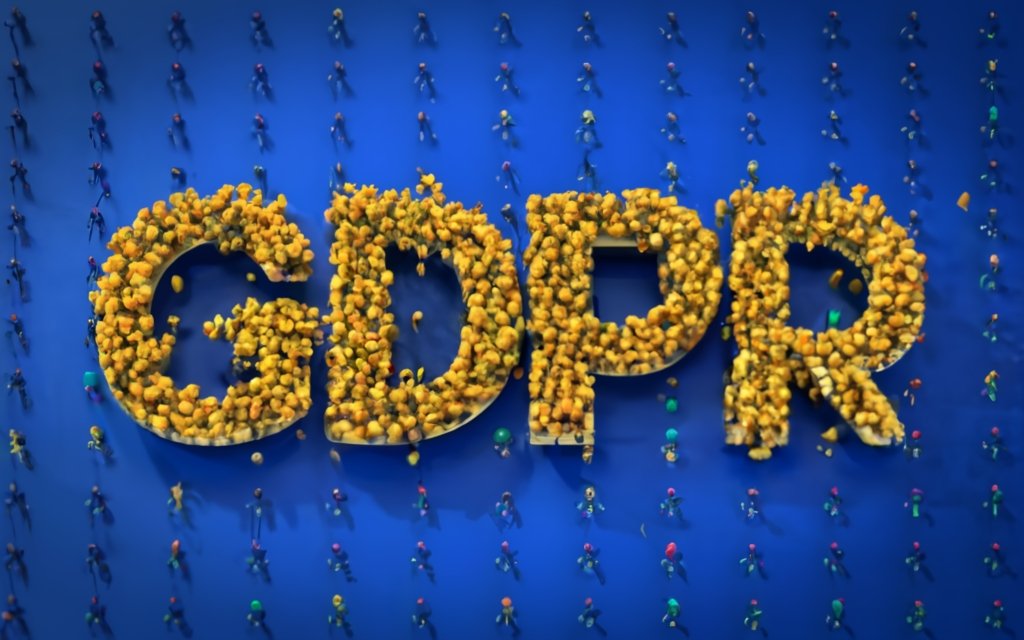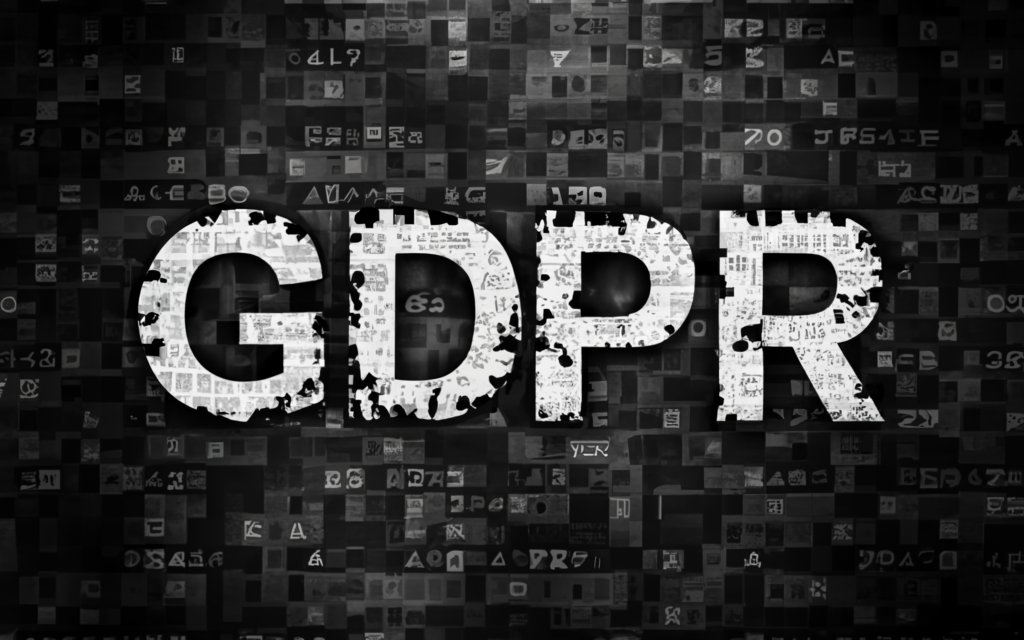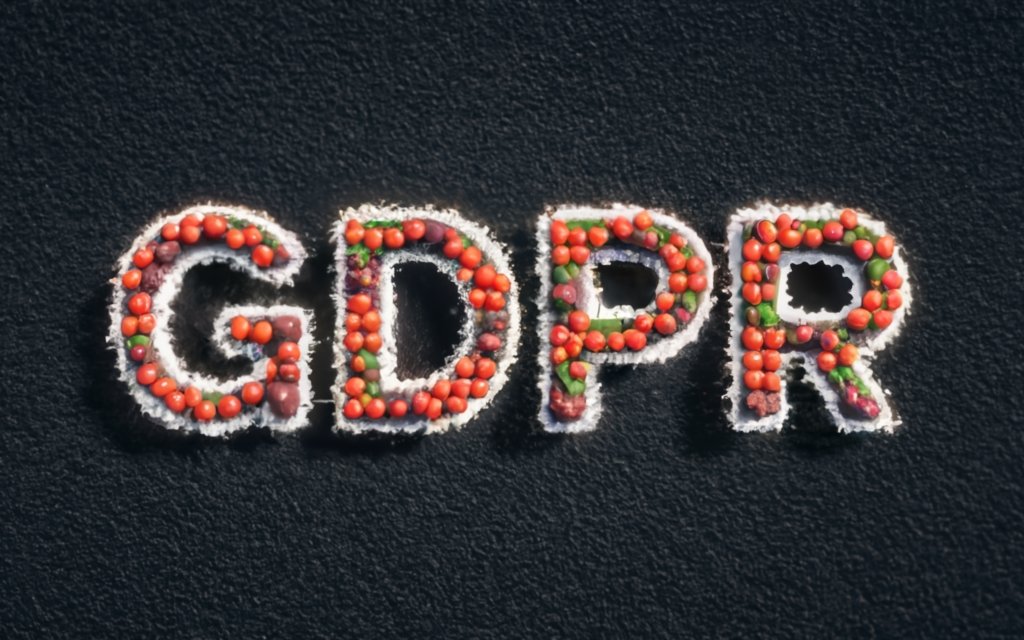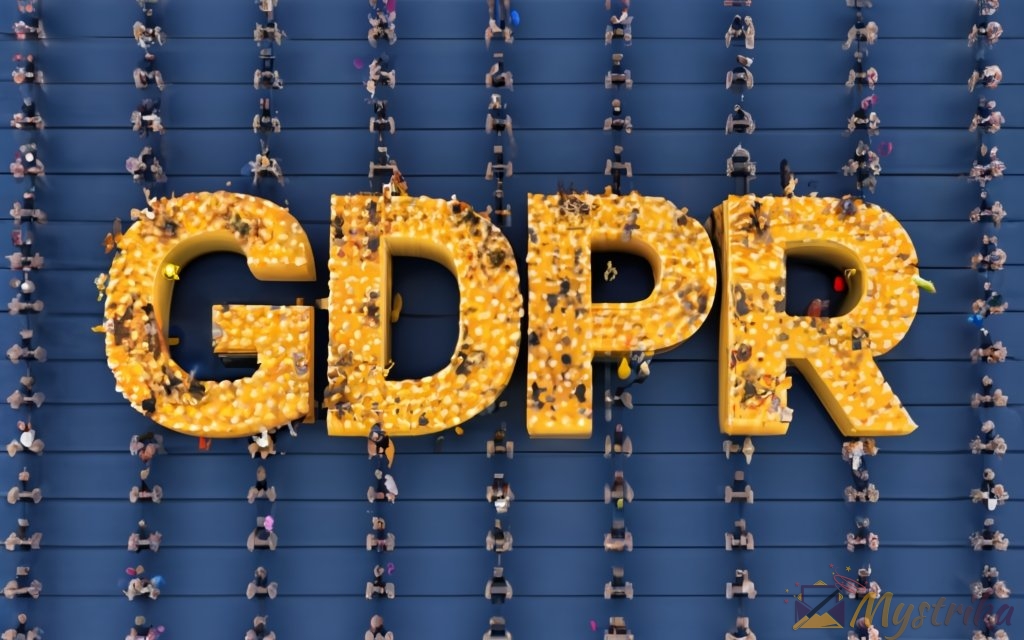When GDPR launched in 2018, some predicted the demise of email marketing in Europe. But with the right consent-focused strategy, your campaigns can thrive under new data privacy laws. This comprehensive guide demystifies GDPR email compliance.
The internet has connected the world like never before. But with great connectivity comes great responsibility. As more and more personal data is shared online, regulations like the General Data Protection Regulation (GDPR) have emerged to protect user privacy.
What is GDPR?
The General Data Protection Regulation, more commonly referred to as GDPR, is a European privacy law that regulates how businesses can collect, process, and use the personal data of EU citizens. It was approved by the EU Parliament in April 2016 and went into full effect on May 25, 2018.
The key goals of GDPR are:
- Give EU citizens more control over their personal data. Individuals have the right to access, correct, delete, and restrict the processing of their personal information.
- Simplify the regulatory environment. GDPR replaces the previous data protection directive and unifies regulation within the EU.
- Increase data security requirements for organizations. Companies must implement appropriate technical and organizational measures to protect user data.
- Enforce accountability and governance requirements. Organizations must be able to demonstrate GDPR compliance.
- Levy harsh penalties for non-compliance. GDPR violations can result in fines of up to 4% of global annual revenue or €20 million, whichever is higher.
GDPR applies to any company that collects or processes personal data of EU residents, regardless of where the business is located. The regulation governs data collected from individuals in the EU through any channel, including email marketing.
How Does GDPR Impact Email Marketing?
Email marketing relies heavily on collecting and using personal data like names, email addresses, and areas of interest. GDPR ushered in several new requirements that email marketers must comply with.
Consent Requirements
One of the biggest changes is around consent. GDPR specifies that organizations must have explicit, affirmative consent before collecting or using EU residents’ email addresses for marketing purposes.
Consent requests must be:
- Separate from other terms and conditions
- Easy to understand
- As easy to withdraw as to give
Pre-checked opt-in boxes are prohibited. Businesses can no longer rely on assumed or implied consent.
Consent Records
Companies also need to keep detailed records of how and when consent was obtained. When requested by regulators, you must be able to prove:
- Who gave consent
- When they consented
- What they were told at the time
- How they provided consent
Data Subject Rights
GDPR strengthens the rights of individuals to control their data. Some key rights relevant to email marketing include:
- Accessing their personal data
- Correcting inaccurate information
- Deleting their data
- Restricting data processing
- Objecting to data use
Email recipients can request to see what data you have about them, ask you to update or delete it, or tell you to stop using it for marketing purposes.
Data Fines
One of the biggest fears around GDPR is the substantially increased fines. Serious GDPR violations can lead to fines of up to 4% of global revenue or €20 million. Just a few examples:
- H&M was fined €35 million for snooping on employees
- British Airways was fined £20 million after a data breach
- Google was fined €50 million for lack of consent in ads
With email addresses being personal data, using them without proper consent or failing to protect them adequately could clearly fall under GDPR non-compliance.
Key Takeaways
GDPR has significantly impacted email marketing operations and strategies:
- Must have affirmative consent to collect email addresses
- Consent request must be clear and separate from other terms
- Detailed consent records must be maintained
- Right of users to access or delete their data
- Potential for huge fines for regulatory non-compliance
By focusing on transparency, consent, rights of access, and data security, GDPR aims to give users more control over their personal data in the digital age.

Cold email can be an effective way to generate new business opportunities. But there’s a fine line between productive cold outreach and spam. GDPR has made that line even finer. So is cold emailing illegal under the new European data privacy law?
Difference Between Cold Emails and Spam
Cold email and spam may seem similar on the surface, but there are some key differences.
Spam is sending unsolicited commercial emails in mass. Spammers typically don’t target or personalize messages. They just bombard inboxes hoping someone will bite.
Cold email, on the other hand, involves targeted, personalized outreach to prospective customers. Cold emailers research individuals at specific companies to tailor emails that provide value and solve pain points.
GDPR sets strict regulations on how organizations can collect and use personal data for digital marketing. This includes email addresses used for sending unsolicited communications like cold emails.
But with the right approach, cold email can be GDPR-compliant. Let’s look at some specific regulations for cold email under the new data privacy law.
Cold Email Regulations Under GDPR
GDPR doesn’t explicitly ban cold email. However, it does impose certain conditions around obtaining contact details and providing an opt-out.
Legitimate Interest
GDPR allows the collection and use of personal data if the organization has a “legitimate interest” for processing that data.
For cold email, this means the business must have a valid, justifiable reason for contacting the individual. You can argue you have a legitimate interest in emailing potential customers who are likely interested in or could benefit from your product or service.
But you can’t just email any random person out of the blue. You need to do your research and only target prospective customers who are relevant to your offering.
Transparency on Data Source
Since GDPR aims to protect data privacy, you must be transparent about where you got the recipient’s contact details. State upfront in your cold emails how you obtained their email address and name.
If the prospect questions your use of their data, be prepared to explain your legitimate interest and give them the choice to opt out or have their details deleted.
Easy Opt-Out
GDPR requires having a clear opt-out in all marketing communications. Make sure your cold emails have an easy way for recipients to opt out of any future emails.
Phrase it in a friendly way, like “If you’d rather not receive emails from us, just let me know.”
Delete Data on Unsubscribe
If an individual opts out or requests you delete their data, you must honor it promptly under GDPR. Remove their details from your mailing lists and CRM.
But you can keep the minimum information needed to track their opt-out preference and prevent future contact.
Key Takeaways
- Cold email is not inherently illegal under GDPR, but must comply with data privacy rules.
- You must have a legitimate interest to email each prospect individually.
- Inform recipients where you got their contact data from.
- Always provide an easy way to opt out in your emails.
- Delete personal data if requested and stop any further emails.
With a privacy-focused approach, transparent communication, and built-in opt-out mechanisms, cold email and GDPR can comfortably co-exist.

GDPR has significantly changed the email marketing landscape. Building a compliant email strategy that aligns with the new data privacy regulation is crucial. Let’s walk through some key steps to ensure your email campaigns adhere to GDPR consent, documentation, and opt-out requirements.
Obtain Clear Opt-in Consent
The foundation of GDPR compliance is obtaining explicit consent from subscribers to collect and use their personal data. For email marketing, that means getting opt-in approval to send commercial messages.
Use Unchecked Opt-in Boxes
GDPR specifically states pre-checked boxes don’t qualify as valid consent. When collecting email addresses, use an unchecked opt-in box that subscribers must actively select.
✅ Example opt-in checkbox:
[ ] I agree to receive marketing emails from [Company]
❌ Don’t use pre-checked boxes:
[x] I agree to receive marketing emails from [Company]
Separate From Other Consents
Make sure your email opt-in is separate from any other consents like agreeing to terms and conditions or your privacy policy.
Bundling it together fails the “freely given” GDPR standard. Present it as a clear stand-alone option so subscribers explicitly understand what they’re agreeing to.
Document and Manage Consent Records
Maintaining proof of consent is critical for demonstrating GDPR compliance if regulators come calling.
Record Consent Details
For each email subscription, capture:
- Name and email address of the individual
- Date/time consent was given
- Method they used to opt-in (website form, in-person, etc)
- Confirmation that they actively checked the box
- Exact language of the consent request
Honor Opt-Outs
When someone unsubscribes, immediately record it in your system and add them to suppression lists. Never re-email them unless they opt back in later.
Document opt-outs with:
- Name, email, date/time of the unsubscribe request
- Method used (unsubscribe link, reply, preference center, etc)
- Confirmation their data has been deleted or suppressed
Regularly Review and Refresh Consent
Over time, your email practices and subscribers’ preferences can change. GDPR compliance requires keeping consent current.
Audit Existing Lists
Conduct periodic audits of your subscriber lists to identify any potential consent issues:
- Missing or unclear consent records
- Outdated, inactive subscriber details
- Content mismatches if your emails have changed
Take appropriate action, such as cleaning your list or re-permissioning subscribers.
Send Re-permission Campaigns
If you can’t confirm consent under GDPR standards or want to refresh consent, launching re-permission campaigns can help.
Send a targeted email:
- Explaining changes to your marketing approach
- Asking subscribers to re-opt-in if they want to continue receiving emails
- Providing an easy way to unsubscribe if they don’t
Physically verify and document everyone who re-opts-in. Remove those who don’t respond.
Make Unsubscribing Easy
Enabling subscribers to easily withdraw consent at any time is paramount for GDPR.
Include Unsubscribe Link
Every commercial email must have a clear, obvious unsubscribe link traditionally at the bottom. But you can get creative with placement.
Simple Withdrawal Process
Opting out should require minimal effort. Clicking a link or replying “unsubscribe” must immediately remove them.
Avoid complicated multi-step processes to respect the withdrawal of consent.
Removal From All Lists
Once someone opts out, remove them from all related mailing lists. Segment subscribers appropriately to facilitate this.
Suppress their data to avoid accidentally re-adding them before permanent deletion.
Follow Email Security Best Practices
GDPR principles like privacy and accountability extend to how you secure email data. Some tips:
- Encrypt subject lines and content
- Hash/mask email addresses
- Require employee security training
- Implement access controls
- Have an incident response plan
- Use privacy-focused vendors
- Destroy data after a set period if not required
- Conduct frequent audits for vulnerabilities
Building a GDPR-ready email strategy takes effort but pays dividends by strengthening subscriber relationships through transparency and consent best practices. Take GDPR’s principles to heart, not just as a compliance exercise but a way to improve your overall email marketing approach.

Nailing the basics of consent requirements and opt-outs is a great start for GDPR email compliance. But the regulation also impacts transactional emails, purchased lists, and has serious fine implications that email marketers need to keep in mind.
GDPR Requirements for Transactional Emails
Transactional or service emails like receipts, shipping notices, password resets, or account alerts are a gray area under GDPR.
When Consent vs Legitimate Interest Applies
Getting opt-in consent is difficult for transactional emails that customers expect to receive. But you typically can rely on “legitimate interest” as the lawful basis for sending them.
However, if the email includes any marketing content, opt-in consent is likely required again. Avoid the temptation to cross-promote in transactional emails.
Explain in Your Privacy Policy
Your privacy policy should outline situations where you’ll use customer data to send transactional communications.
For example: “We send email confirmations when you make a purchase to fulfill our contractual obligation. We also send service notifications related to your account.”
This sets clear expectations.
Purchased Email Lists and GDPR Compliance
Many companies turn to purchased lists to acquire new email subscribers. But caution is required under GDPR.
Conduct Due Diligence
You must validate that individuals on purchased lists properly consented to have their email address shared and used for your marketing purposes.
Scrutinize the list provider and only work with reputable sources that can prove GDPR-compliant opt-in collection.
Inform Recipients of the Source
Even with diligence, transparency is key. Email recipients have a right to know where you obtained their data.
Your first communication should state something like: “We received your email address from [Source] because of your interest in [Topic].”
Also remind them of their right to opt out.
GDPR Fine Implications
The massive fines permitted under GDPR for data violations have ignited fear in the marketing community.
Potential Financial Penalties
Serious infractions can result in fines up to 4% of global annual revenue or €20 million, whichever is higher.
Fines apply to technical violations as well as improper use of personal data without adequate consent or security.
Non-Financial Repercussions
Beyond huge fines, authorities can also impose non-monetary discipline like:
- Banning data processing activities
- Suspending data transfers
- Ordering companies to comply with audits
- Requiring revised privacy practices
These measures pack a reputational punch and seriously hinder operations.
Avoiding email compliance shortcuts and focusing on consumer transparency is the only sure way to prevent GDPR nightmares. The potential business impacts underscore why fully embracing GDPR’s principles matters.

GDPR marks a new era for email marketing in Europe and beyond. While achieving full compliance takes time and effort, keeping a few core principles in mind will go a long way:
Focus on Freely Given, Informed Consent
At the heart of GDPR is empowering individuals to freely give and withdraw their consent around data collection for specific purposes.
Some tips for GDPR consent best practices:
- Use unchecked opt-in boxes – Never pre-checked boxes or assume consent
- Separate from other terms – Keep email opt-in distinct from T&Cs, policies, etc.
- Be transparent – Clearly explain how data will be used
- Consent must be unambiguous – Don’t use confusing legal jargon
- Consent is revocable – Provide easy opt-out in every email
- Request consent again if needed – Don’t rely on outdated or unclear consent indefinitely
Think beyond a compliance checklist. View consent as an ongoing conversation where recipients feel in control.
Keep Detailed Records of All Consents
Documenting consent represents one of the biggest GDPR shifts. Be prepared to prove you obtained proper consent if regulators come knocking.
- Log when and how consent was received whether online, in-person, over phone, etc.
- Track status changes like opt-outs and re-consents to show ongoing compliance.
- Build audit trails noting who accessed and used data showing it was handled appropriately.
- Demonstrate security controls with documentation on encryption, access restrictions, employee training, etc.
Thoroughly record and organize consent evidence to verify your compliance if scrutinized.
Regularly Review and Refresh Consent as Needed
User preferences evolve. Your email strategy and products will likely change over time as well. Don’t let consent stagnate.
- Audit subscriber lists periodically to identify any consent gaps.
- Segment users appropriately to manage preferences efficiently.
- Send re-permission campaigns if prior consent falls short of GDPR standards.
- Re-consent at a cadence that matches your needs whether users need a yearly reminder or you handle dynamically based on email type.
- Delete outdated data that’s no longer required for the specified purpose.
Continuously reviewing and refreshing consent maintains compliance and subscriber satisfaction long-term.
Make Unsubscribing Simple for Email Recipients
Nothing frustrates customers more than getting stuck on mailing lists. Make GDPR’s required opt-out easy.
- Include a clear unsubscribe link in the footer of every commercial email.
- Accept replies like “unsubscribe” as valid opt-out requests.
- Process opt-outs promptly – within 10 days max per CAN-SPAM.
- Suppress data immediately to avoid errors and honor their wishes.
- Avoid overly complex processes – no endless confirmation loops or begging them to stay.
Prioritizing user-friendly, hassle-free opt-outs builds trust and positions you as respecting subscriber privacy.
Never Use Data for Other Purposes Without Consent
Resist the urge to get creative repurposing subscriber data without their permission – the hallmark of GDPR violations.
- Don’t rent, sell, or share data in ways users didn’t explicitly consent to.
- Keep marketing separate from transactions like using order details to cross-sell.
- Limit employee access to data only to those who need it for authorized purposes.
- Implement adequate security controls like encryption and access controls to safeguard data.
- Delete data promptly when no longer required per GDPR’s data minimization principle.
Restricting data use bolsters compliance. But more importantly, it reassures customers their information is in trustworthy hands.
In short
Achieving full GDPR compliance is an evolving, long-term endeavor. But staying current on consent, honoring opt-outs, carefully controlling data use, and maintaining diligent records lays a strong legal and ethical foundation.
Rather than view GDPR as restrictive and burdensome, embrace its principles to build subscriber loyalty. With individuals more empowered than ever, a privacy-first approach becomes a competitive advantage setting your brand apart.
Conclusion
GDPR creates new rules for email marketing. The goal is to protect people’s information. Companies must be very careful when collecting and using email addresses and other personal data.
GDPR applies to any business that contacts EU residents by email. It does not matter where the business is located.
There are steps every company must take to comply with GDPR:
Get clear consent to use emails for marketing
You must ask people to opt in before sending them marketing emails. Consent cannot be bundled with other terms. Pre-checked boxes are not allowed.
Keep good records of consent
Document when and how someone consented. Be able to show it if asked.
Allow people to access or delete data
EU residents can request to see the data you have about them. They can also ask you to update or delete it.
Make unsubscribing very easy
Include a clear opt-out link in every marketing email. Honor unsubscribe requests immediately.
Use data only for specific purposes
Only use collected data for the purposes stated when it was collected. Get new consent for anything else.
Take data security seriously
GDPR says to protect personal data with strong security measures.
Follow rules for transactional emails
Service emails like receipts may not need opt-in consent. Explain their use in your privacy policy.
Do extra checks on purchased lists
Any imported list must have properly obtained GDPR consent. Tell recipients the source.
Avoid huge fines
Penalties for GDPR violations can be 4% of global revenue or €20 million!
Focus on individuals
GDPR gives EU residents more control over their data. Build trust by putting them first.
The key takeaways are:
- Check you have the right consent from subscribers.
- Keep detailed records of all consents and opt-outs.
- Make it very easy for people to opt out or access data.
- Only use data for agreed-upon purposes.
- Implement strong security protections.
- Inform subscribers about transactional emails.
- Validate imported lists comply with GDPR.
- Follow all rules carefully to avoid big fines.
- Treat subscriber privacy as your top priority.
GDPR creates some new hurdles for email marketers. But looking at it as an opportunity to improve the subscriber experience is best. Build open, trusting relationships with email subscribers. Avoid shortcuts, be transparent, and honor their preferences. This focus on individuals is at the core of GDPR. It will benefit your business in the long run too.
Summary
GDPR ushered in a new era of data privacy and compliance for email marketing. If you’re looking to refresh and strengthen your GDPR approach, keep these core principles in mind:
- Obtain clear, explicit consent for marketing emails separately from other terms using unchecked opt-in boxes.
- Maintain detailed records documenting when and how all consents were acquired and managed over time.
- Regularly review and refresh consent by auditing subscriber lists, re-permissioning, and sending updated signup forms.
- Make unsubscribing easy with visible links in emails and simple, immediate opt-out processes.
- Explain use of transactional emails like receipts and password resets that don’t require opt-in consent in your privacy policy.
- Validate imported lists were collected with proper GDPR consent and inform subscribers of the source.
- Implement stringent email data security including encryption, access controls, training, and audits.
- Foster subscriber trust and loyalty by respecting their privacy rights and preferences at every stage.
- Avoid non-compliance fines as much as 4% of global revenue by meticulously following all GDPR regulations for emails.
With the right GDPR-aligned strategy focused on consent, transparency, and subscriber relationships, your email marketing can thrive and fully comply with expanded data privacy laws.
Frequently Asked Questions
Still have some lingering questions about GDPR’s impact on your email marketing efforts? Here are answers to some commonly asked questions:
Q: Does GDPR apply to all companies?
A: GDPR applies to any company that handles personal data of EU residents, regardless of where the business is located.
Q: Can I still send cold emails under GDPR?
A: Yes, you can send targeted cold emails if you have a legitimate interest and get consent where needed. Be transparent on your data source, provide opt-outs, and only email relevant prospects.
Q: How often do I need consent from subscribers?
A: You should refresh consent any time your data practices change substantially or at a regular cadence matching your business needs.
Q: What are the penalties for non-compliance?
A: GDPR fines can be up to 4% of global annual revenue or €20 million, whichever is higher. Authorities can also issue non-monetary disciplinary measures.
Q: How long must I honor opt-out requests?
A: Unsubscribe requests must be honored immediately and subscribers suppressed from future communications indefinitely until they opt back in.
Q: Can I rely on our old email subscriber list?
A: Audit existing lists to ensure you have clear consent records under GDPR’s standards. Re-permission where appropriate.
Q: How should I document consent records?
A: Log details like name, email, date, consent method, and confirmation it was actively given. Track status changes like opt-outs too.
Q: Do I need consent for operational emails?
A: You can likely rely on legitimate interest for purely transactional emails. Explain their use in your privacy policy.
Q: What security measures does GDPR expect?
A: Require employee training, access controls, encryption, audits, and more based on data sensitivity. Implement privacy by design.
Carefully following GDPR’s expanded regulations may require some process changes, but positions your brand as one that respects and values your subscribers’ privacy.

